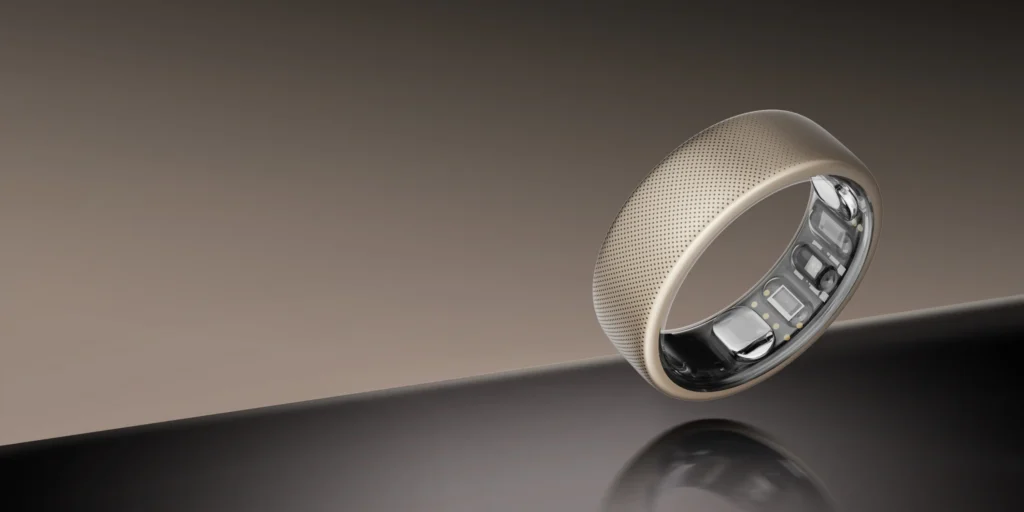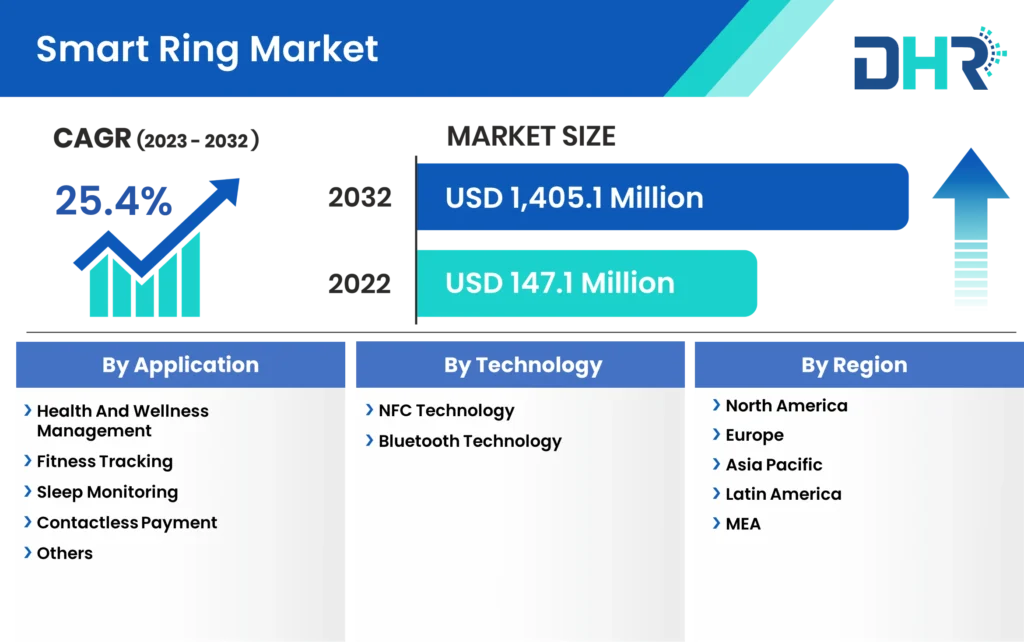Forget Smartwatches! The Tiny Wearable That’s About to Revolutionize Health Tracking
Wearable technology has become a staple of modern life. From fitness bands to smartwatches, people have grown accustomed to having health data and notifications right on their wrists. But in 2024, the spotlight is shifting to something even more compact and revolutionary: smart rings. These small, unobtrusive wearables promise to make an even bigger impact than their wrist-bound counterparts, offering cutting-edge features that could change the way we monitor our health, interact with technology, and stay connected. One of the key players leading this trend is the Amazfit Helio Ring, which could signal the next frontier in wearable tech.
The Rise of the Smart Ring

Smart rings are not entirely new; they have been around in some form for a few years. However, until recently, they remained relatively niche, with limited functionality compared to smartwatches. Most were used for basic tasks such as step counting or sleep tracking, offering convenience without the bulk of a wrist-worn device. The Oura Ring is a prime example, having attracted attention for its sophisticated sleep analysis and minimalist design.
But 2024 could be the year smart rings truly break into the mainstream, driven by advancements in technology and an increasing desire for discreet, effective health-tracking solutions. At CES 2024, companies like Amazfit and Samsung showcased smart rings that go beyond the basics, offering a level of functionality that rivals or even surpasses what we’ve come to expect from smartwatches.
The Amazfit Helio Ring: Compact Yet Powerful

One of the most exciting developments in the smart ring space is the Amazfit Helio Ring. This tiny wearable is designed to pack a punch, offering health tracking capabilities that were once the domain of much larger devices. The Helio Ring emphasizes fitness tracking, heart rate monitoring, and sleep analysis, but it does so in a way that is nearly invisible to the user.
Unlike smartwatches, which can be bulky and distracting during activities such as sleep or exercise, smart rings offer a more seamless user experience. You can wear them day and night without even noticing they’re there. This makes them particularly appealing to users who prefer less intrusive technology or who find smartwatches cumbersome.
Moreover, the Amazfit Helio Ring comes with advanced health metrics that monitor not just your physical activity but also more nuanced indicators of wellness, such as blood oxygen levels and stress management. The ability to constantly track these metrics from such a small, unobtrusive device is a game-changer.
Health Tracking Reimagined

Smart rings are part of a broader movement toward continuous health monitoring. While smartwatches have made this possible to some extent, their size and battery life limitations have prevented truly seamless integration into our daily lives. Smart rings, on the other hand, offer a more natural fit, both figuratively and literally.
Take sleep tracking, for example. While many smartwatches offer some form of sleep analysis, wearing a large watch to bed can be uncomfortable for some users. Smart rings like the Helio Ring are much more conducive to wearing 24/7, enabling users to gather accurate, round-the-clock data on their sleep patterns without any discomfort. The ring’s biometric sensors can track not just how long you’ve slept but also the quality of your sleep, including time spent in REM, deep sleep, and light sleep stages.
Another standout feature of the Amazfit Helio Ring is its ability to track your heart rate variability (HRV), a key indicator of your body’s response to stress. HRV is a powerful metric for understanding how well your body is handling physical and mental stress, and it’s becoming increasingly popular among fitness enthusiasts and health-conscious individuals. By incorporating HRV tracking into such a small device, Amazfit is giving users the ability to better manage their well-being.
The Next Level of Discreet Connectivity

Beyond health tracking, the smart ring revolution is poised to redefine the way we interact with technology. As more devices become interconnected, users are looking for wearables that don’t just track health but also serve as an interface for other smart devices.
The Amazfit Helio Ring, for example, can connect to your smartphone or other devices, allowing you to receive notifications, control music, and even interact with smart home devices with simple gestures. Imagine being able to control your home’s lighting or thermostat by simply tapping or rotating your ring. This level of convenience, combined with the ring’s health tracking features, could make it a key part of the Internet of Things (IoT) ecosystem.
Why Smart Rings Are Gaining Popularity

There are several reasons why smart rings are poised to gain traction over smartwatches:
- Discreet Design: One of the biggest advantages of smart rings is their small, discreet design. Unlike smartwatches, which are always visible and can sometimes feel like a fashion statement, smart rings are subtle and blend seamlessly into everyday life. This makes them an attractive option for users who want the benefits of wearable tech without drawing attention to it.
- Comfort: Smart rings are more comfortable than watches or wristbands, especially for all-day wear. Many people find smartwatches too bulky to wear while sleeping or exercising, whereas smart rings are designed to be worn 24/7 with minimal discomfort.
- Battery Life: Battery life is another major factor. Smartwatches typically need to be charged every day or two, which can be inconvenient for continuous health monitoring. In contrast, smart rings tend to have much longer battery life, often lasting up to a week on a single charge. This means users can track their health and fitness without having to worry about frequent recharging.
- Precision: While smartwatches offer robust health tracking, they are limited by the fact that they sit on the wrist, where readings like heart rate can be less accurate than on a finger. The finger offers a more reliable location for capturing biometric data, which can make smart rings more accurate when it comes to measuring metrics like heart rate and oxygen saturation.
The Future of Wearable Health Tech

The introduction of advanced smart rings like the Amazfit Helio Ring marks a pivotal moment in the evolution of wearable technology. The future looks bright for smart rings, as more companies are likely to follow suit and release their own versions of this compact wearable. Samsung, for example, is rumored to be working on the Galaxy Ring, a device that could rival the Helio Ring in terms of features and functionality. With big players entering the market, competition is set to heat up, which will only benefit consumers by driving innovation and pushing the boundaries of what smart rings can do.
As the technology behind smart rings continues to improve, we can expect to see even more advanced health metrics and features added to these devices. This could include blood pressure monitoring, ECG capabilities, and even real-time hydration tracking. The ability to constantly monitor your health at such a detailed level from a tiny ring on your finger is truly revolutionary.
In addition, smart rings are likely to become even more integrated into our everyday lives. As IoT devices become more common, smart rings could serve as a hub for controlling everything from your smartphone to your home’s smart appliances. In the future, we may even see smart rings that allow for contactless payments, replacing the need for credit cards or even smartphones in some cases.
Conclusion: A Game-Changer for Health and Tech

In 2024, the world of wearable technology is experiencing a shift from smartwatches to smart rings, with the Amazfit Helio Ring leading the charge. Offering powerful health tracking capabilities in a small, discreet package, smart rings provide a level of comfort and convenience that smartwatches can’t match. With longer battery life, precise biometric sensors, and the potential for IoT integration, smart rings are set to revolutionize not only how we track our health but also how we interact with the world around us.
Whether you’re a health enthusiast looking for the latest in fitness tracking or someone who wants a seamless, unobtrusive way to stay connected, smart rings may be the perfect solution. Forget smartwatches—2024 is the year of the smart ring.




